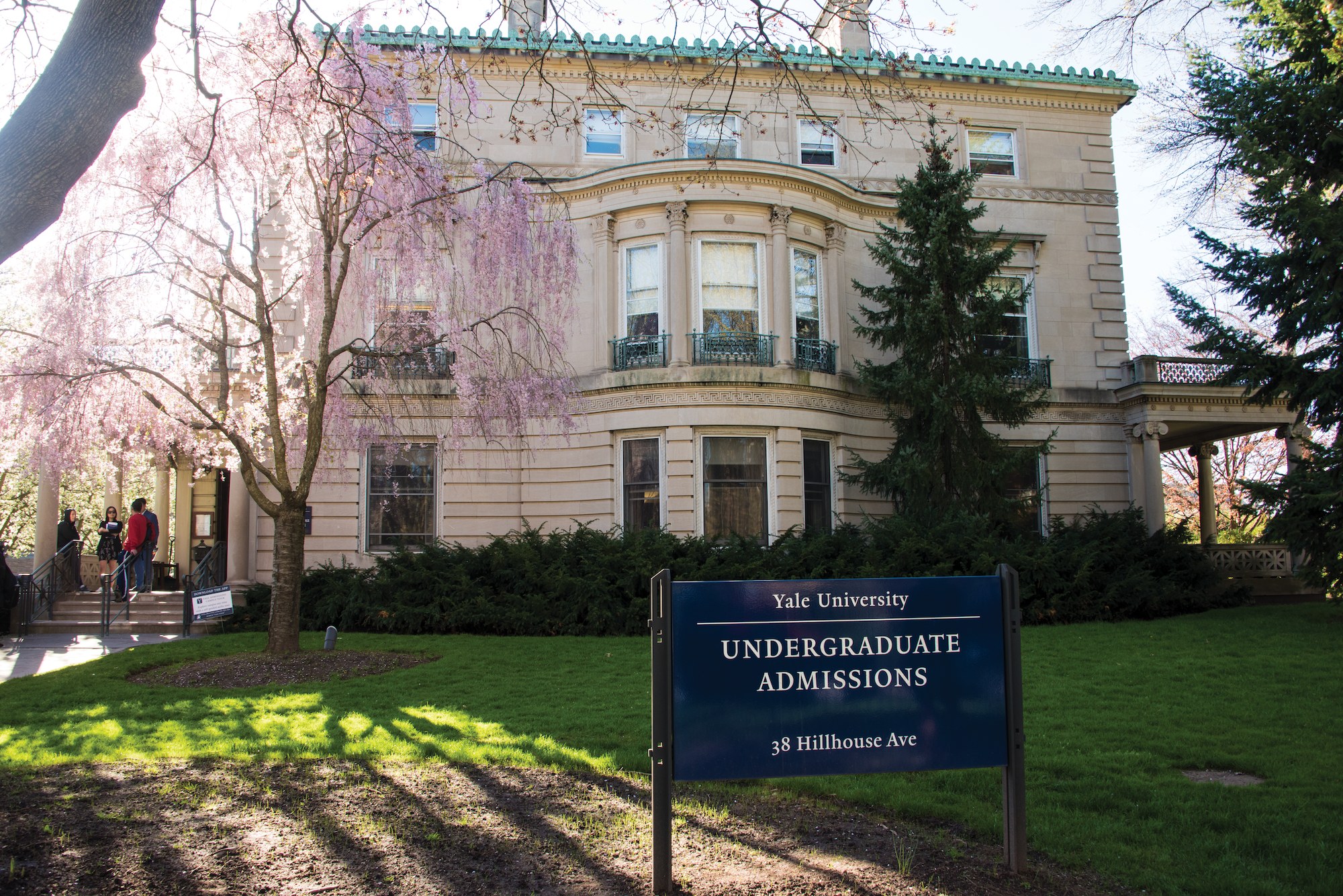Yale receives 7,777 early action applications
7,777 prospective students submitted applications to join Yale’s class of 2027 — the second-largest early applicant pool on record for Yale College.

Madelyn Kumar, Senior Photographer
As per graduate schools, Yale College received 7,777 early action applications from prospective members of the class of 2027, marking the second-highest number of early applications in College history. The class of 2025’s record-high number of 7,939 applicants still leads.
The early action pool for the class of 2027 is about 6 percent larger than that of the class of 2026, which previously held the second place spot. While that growth is generally consistent across demographics categories, the Office of Undergraduate Admissions noted increases larger than 6 percent in students who identify as a member of an underrepresented racial or ethnic group, students who would be the first in their families to attend college and international applicants.
“The admissions office is much more interested in the strength and diversity of the pool of students who apply to Yale each year than simply the number of students who apply,” wrote Jeremiah Quinlan, dean of Undergraduate Admissions and Financial Aid, echoing sentiments from last year’s early action cycle. “I am pleased that our early action pool has been relatively consistent in size for three years and that students from underrepresented backgrounds are now more likely to apply to Yale early than in the past.”
Applications were due on Nov. 1. The admissions committee is currently in the process of reviewing early action applications and is scheduled to notify students of their application status — either an acceptance, rejection or deferral until the regular decision cycle — by the middle of December.
Upon receiving decisions, admitted students who applied for financial aid will also receive a letter describing their Yale financial aid package.
As with the regular decision timeline, admitted students who had not completed their application for financial aid at the time of submission will have time to work with Yale’s Office of Undergraduate Financial Aid to complete any needed paperwork such that they receive a financial aid letter before May 1, which is the deadline for students to accept or decline an offer of admission.
This batch of applicants was able to choose whether to submit their test scores or not — as will regular decision applicants to the class of 2027 — continuing Yale’s COVID-19-era test-optional policy. The admissions office suspended standardized test requirements in June of 2020 to accommodate pandemic-related circumstances.
Yale is expected to make a long-term decision on standardized testing requirements by the winter of 2023.
This cycle’s number of applications is six percent bigger than the pool of early action prospects to the class of 2026, which was, in turn, eight percent smaller than the pool of early prospects for the class of 2025 — the highest number of early action applications on record. But compared to early action applications to the class of 2024, the current applicant group is 35 percent larger.
Commenting on the record-high class of 2025 applicant pool in April 2021, Quinlan attributed an increase in domestic first-generation applicants and applicants of color, as well as of international applicants, to Yale’s then-new optional testing policy and to virtual outreach programs.
While he said it is “impossible” to conclude direct causative relationships between outreach programs and an application pool, Senior Associate Director for Outreach & Recruitment Mark Dunn ’07 reflected on updates that the admissions office made to its outreach strategies over the past year.
According to Dunn, Yale’s admissions officers visited more than 500 high schools in-person over the fall. This year marked the first time in three years that Yale conducted in-person high school visits, the News previously reported.
Admissions staff also hosted over three dozen virtual events, including information sessions centered around campus life — both academic and extracurricular — as well as events focused more on regional backgrounds.
Dunn also noted that since the spring of last school year, tour guides have offered over 100 tours a month, welcoming over 31,000 visitors so far this year.
“We were also thrilled to bring back the Multicultural Open House in person, while still hosting virtual sessions highlighting each of Yale’s cultural centers,” Dunn wrote. “Even as high school routines have mostly returned to normal, interest and engagement in our virtual sessions has been high.”
In advance of the regular decision application deadline, Yale will launch its ambassadors program for the first time since fall of 2019. The program invites current Yale College students to visit high schools in their home areas during the November and winter recesses and discuss the Yale experience with high schoolers. This semester, 270 students were hired as ambassadors.
“[High school students] get excited when Ambassadors visit and speak about the (relatively recent) experience of applying to college from the same state or town,” wrote Associate Director of Admissions Corinne Smith. “As an added bonus, we’re able to pay current students to spend a bit of time talking to their peers while they’re home on break.”
The admissions office has declined to draw concrete conclusions between outreach strategy and application yield for the past few cycles. Speaking of last year’s early action pool, Dunn pointed out advances in both virtual and campus-based outreach programs, which echo his comments on this year’s pool.
Last year, Yale accepted 10.9 percent of about 7,300 early action applicants.







